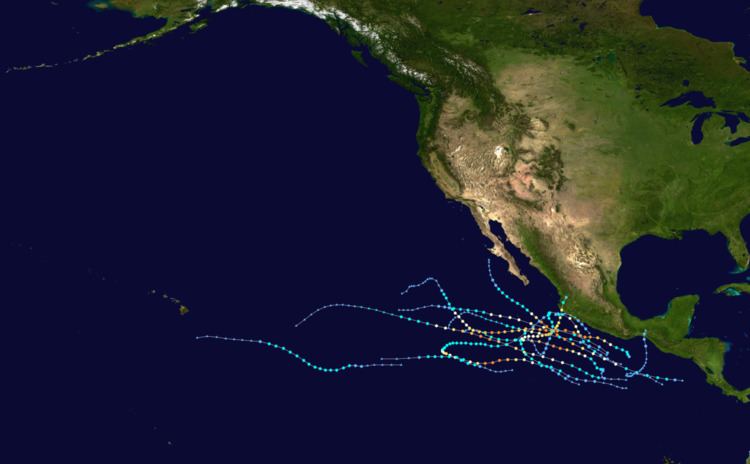 | ||
The 2011 Pacific hurricane season officially started on May 15, 2011 in the eastern Pacific, designated as the area east of 140°W, and on June 1, 2011 in the central Pacific, which is between the International Date Line and 140°W, and lasted until November 30, 2011. These dates typically limit the period of each year when most tropical cyclones form in the eastern Pacific basin. This timeline documents all the storm formations, strengthening, weakening, landfalls, extratropical transitions, as well as dissipation.
Contents
The first storm of the season, Hurricane Adrian formed off the southwest coast of Mexico. Thirteen tropical cyclones developed during the season. Most of these attained tropical storm status, and seven attained hurricane status. However this streak ended when Tropical Storm Fernanda formed and dissipated, never having reached hurricane strength.
May
June
June 1
June 7
June 8
June 9
June 10
June 11
June 12
June 19
June 20
June 21
June 22
